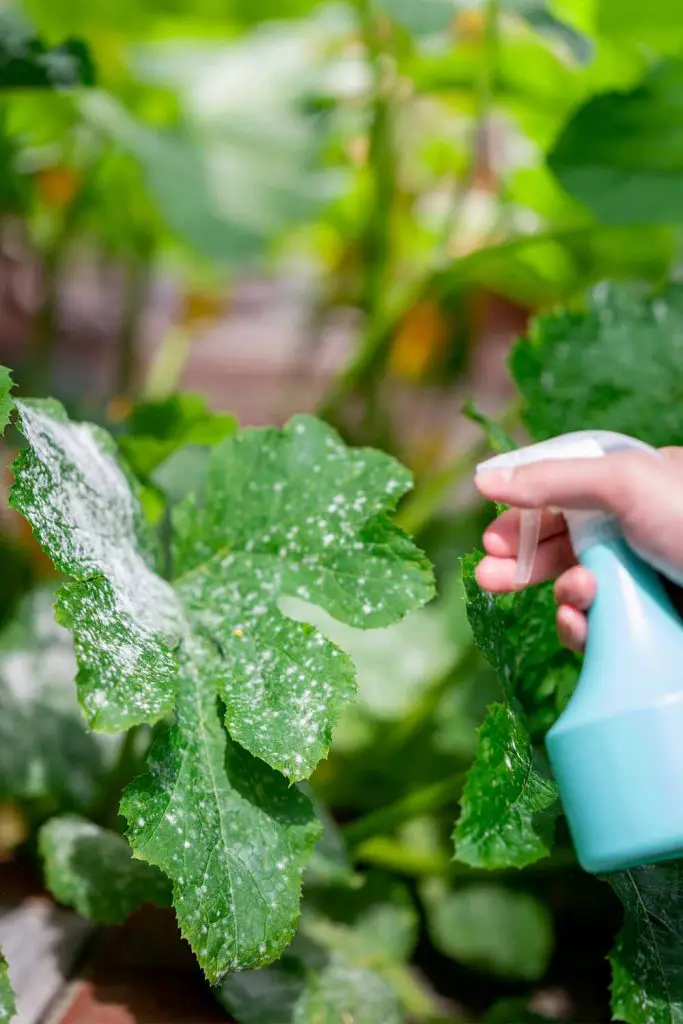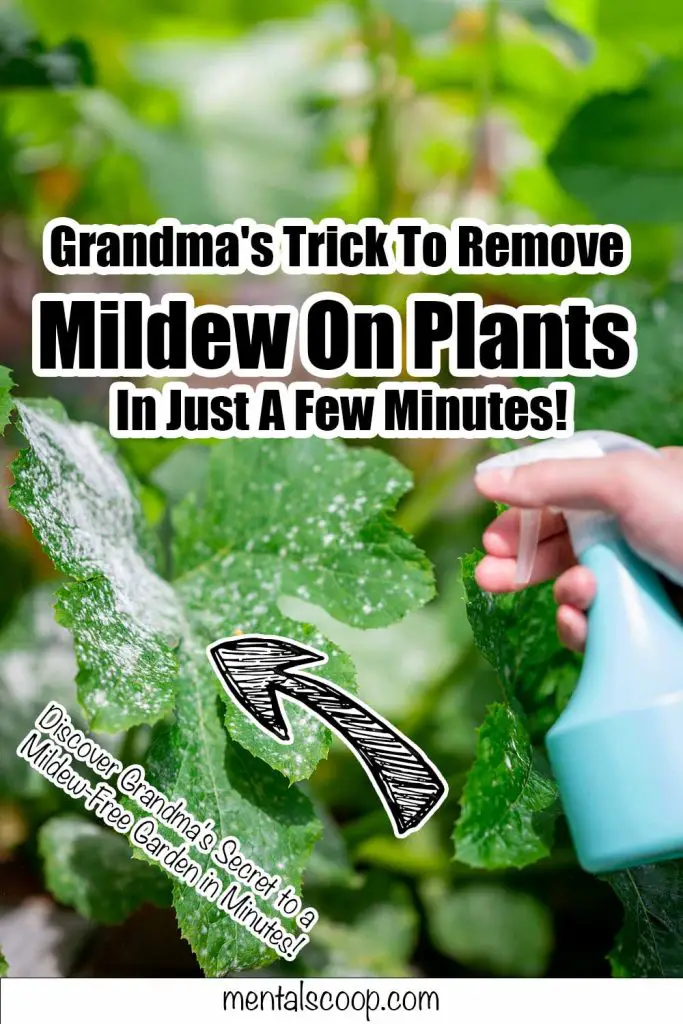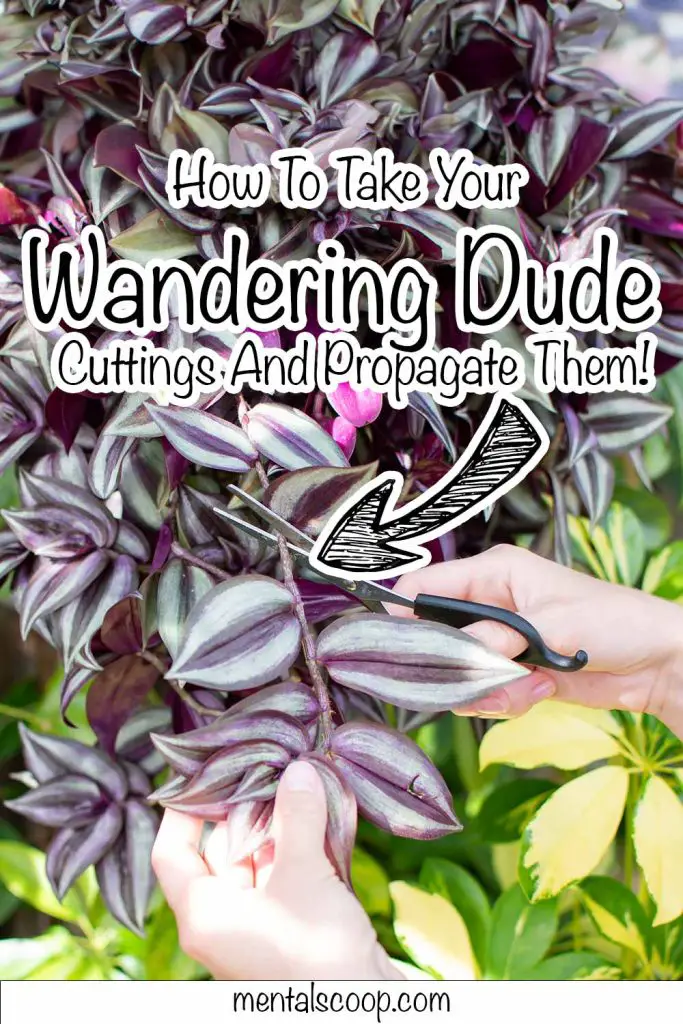Grandma’s Trick To Remove Mildew On Plants In Just A Few Minutes!

Gardening is a beloved pastime, but nothing spoils the joy like discovering mildew on your precious plants. Fortunately, there’s a timeless solution handed down through generations: Grandma’s trick! With her simple and effective method, you can eliminate mildew in just a few minutes.
Let’s delve into this magical remedy and bring your garden back to its healthy, vibrant self.
The Secret Ingredient: Baking Soda
One of the best-kept secrets in the gardening world is the humble baking soda. This common household item is a powerful ally in the fight against mildew. Baking soda, or sodium bicarbonate, has antifungal properties that can halt mildew in its tracks.
How It Works:
- Alkalinity: Mildew thrives in acidic environments, and baking soda increases the pH level on the plant’s surface, creating an inhospitable environment for mildew.
- Dehydration: The baking soda dries out the mildew, preventing it from spreading further.
The Perfect Solution: Mixing Your Mildew Spray
Creating an effective mildew spray requires just a few ingredients. Here’s Grandma’s trusted recipe:
Ingredients:
- 1 tablespoon of baking soda
- 1 tablespoon of vegetable oil (optional)
- 1 teaspoon of liquid dish soap
- 1 gallon of water
Instructions:
- Mix the baking soda and vegetable oil with water.
- Add the dish soap and stir gently to combine.
- Pour the mixture into a spray bottle.
The vegetable oil helps the solution adhere to the leaves, and the dish soap acts as a surfactant, ensuring even coverage.
Spotting Mildew Early: Signs to Look Out For
Early detection is crucial to effectively managing mildew. Keep an eye out for these telltale signs:
- White or gray powdery spots on leaves, stems, and buds.
- Yellowing leaves that eventually brown and die.
- Distorted growth and stunted development in young plants.
Regularly inspecting your plants ensures you catch mildew before it spreads extensively.
The Best Time to Apply: Timing is Everything
Applying your mildew spray at the right time maximizes its effectiveness.
Optimal Conditions:
- Early Morning or Late Afternoon: Avoid the heat of midday sun to prevent leaf burn.
- Dry Weather: Apply when there is no rain forecast for at least 24 hours to allow the solution to work undisturbed.
These conditions ensure the solution stays on the plants longer, giving it time to work its magic.
Application Technique: How to Spray Correctly
Proper application ensures the solution reaches all affected areas. Follow these steps for the best results:
Steps:
- Shake the spray bottle well before use.
- Hold the nozzle close to the plant, about 6-12 inches away.
- Spray thoroughly, covering both the tops and undersides of leaves.
- Pay extra attention to heavily affected areas.
Repeat the application every 7-10 days or after heavy rainfall.
Prevention is Better Than Cure: Keeping Mildew at Bay
Preventing mildew is easier than dealing with an outbreak. Implement these preventative measures to keep your garden mildew-free:
Tips:
- Proper Spacing: Ensure adequate spacing between plants to improve air circulation.
- Prune Regularly: Remove dead or overcrowded foliage to reduce humidity.
- Water Wisely: Water plants at the base, keeping leaves dry to prevent mildew growth.
Companion Plants: Natural Mildew Fighters
Certain plants naturally repel mildew and other pests. Introducing these companions into your garden can provide additional protection:
Recommended Plants:
- Garlic: Its sulfur content has antifungal properties.
- Chives: Releases a natural fungicide that protects surrounding plants.
- Basil: Known for its strong scent, it deters mildew and other pests.
Plant these companions alongside your vulnerable plants for added defense.
Organic Alternatives: Other Natural Remedies
If you prefer variety, several other organic remedies can combat mildew effectively:
Alternatives:
- Neem Oil: A natural pesticide with antifungal properties.
- Milk Spray: Diluted milk (1 part milk to 2 parts water) can prevent and treat mildew.
- Apple Cider Vinegar: A mild acidic solution (1 tablespoon per gallon of water) helps eliminate mildew.
These alternatives provide options to suit different preferences and gardening styles.
A Healthy Garden Year-Round: Maintaining Plant Health
A healthy garden is the best defense against mildew. Regular maintenance and care go a long way:
Maintenance Tips:
- Regular Inspection: Check plants frequently for early signs of mildew or other issues.
- Balanced Fertilization: Over-fertilizing can make plants more susceptible to mildew. Use balanced, organic fertilizers.
- Healthy Soil: Ensure your soil is well-draining and rich in organic matter.
By maintaining a healthy garden, you can enjoy a beautiful, mildew-free space year-round.
Embrace Grandma’s Wisdom
Grandma’s trick to remove mildew on plants is a testament to the power of simple, natural solutions. With baking soda, proper application, and preventive measures, you can keep your garden healthy and vibrant. Embrace these time-tested methods and watch your plants thrive!

More interesting articles you may be interested in reading:

